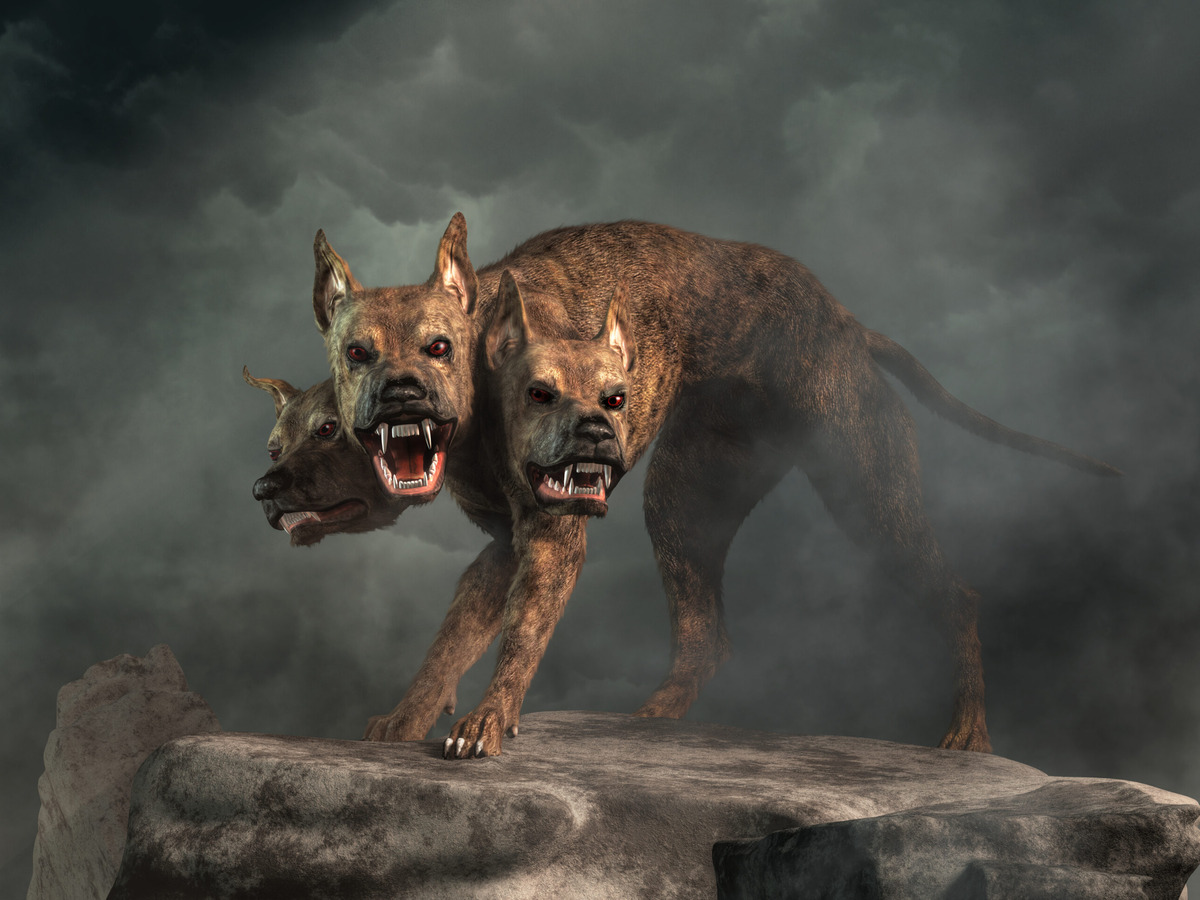
Ever wondered if dragons really hoarded gold or if unicorns roamed ancient forests? Mythical creatures have always sparked our imagination and curiosity. From the depths of the ocean where the Kraken lurks to the lofty heights patrolled by griffins, these beings have been the subject of folklore and tales across different cultures for centuries. But what's the truth behind these fantastical beasts? Are they mere figments of our ancestors' imagination, or could there be more to these stories? In this blog post, we'll dive into 20 fascinating facts about mythical creatures that have captured human fascination throughout history. Prepare to be amazed as we uncover the mysteries and legends surrounding these enigmatic entities. Who knows, you might just find yourself believing in magic by the end of our journey.
Key Takeaways:
- Mythical creatures like dragons, unicorns, and mermaids are fascinating beings that represent natural phenomena and human desires, sparking imaginations across cultures and inspiring captivating stories.
- From the powerful phoenix symbolizing renewal to the mischievous leprechaun hiding gold, mythical creatures from around the world continue to captivate and enchant with their diverse origins and captivating legends.
What Are Mythical Creatures?
Mythical creatures, often woven into folklore and legends, spark imaginations across cultures. These beings, ranging from dragons to unicorns, embody the mysteries and fears of societies, often representing natural phenomena or human desires. Their stories, passed down through generations, continue to fascinate and inspire.
Origins of Dragons in Mythology
- Dragons stand as one of the most iconic mythical creatures, appearing in cultures around the globe. In European tales, they often breathe fire and hoard treasure. Contrastingly, Asian dragons symbolize power, strength, and good luck, and are considered more benevolent.
The Enigma of Unicorns
- Unicorns, with their single spiraled horn, are symbols of purity and grace. Unlike dragons, unicorns are not found in every culture's mythology but have a significant presence in Western folklore and are often associated with magical powers and healing abilities.
Mermaids: Sirens of the Sea
- Mermaids, half-human, half-fish entities, are known for their enchanting beauty and mesmerizing voices. Legends suggest they can be both benevolent, guiding sailors safely home, or malevolent, luring them to their doom.
The Mighty Phoenix
- The phoenix, a bird that cyclically regenerates or is otherwise born again, symbolizes renewal and resurrection. Originating from ancient Egyptian mythology, this creature's story has permeated various cultures, each adding its own twist to the phoenix's rebirth.
Griffins: Guardians of Treasure
- Griffins, with the body of a lion and the head and wings of an eagle, are depicted as powerful and majestic creatures. They are often seen as guardians of priceless possessions, reflecting their role in mythology as protectors of the divine.
The Legend of the Loch Ness Monster
- Scotland's Loch Ness Monster, or Nessie, is a creature said to inhabit Loch Ness in the Scottish Highlands. Descriptions vary, but it is often depicted as large, long-necked, and with one or more humps protruding from the water.
Bigfoot: The Mystery of the Forest
- Bigfoot, also known as Sasquatch, is a folklore figure reported to live in North American forests. Eyewitnesses describe it as a large, hairy, ape-like creature, walking on two legs and evading capture or clear photography.
The Chupacabra: Livestock Predator
- Originating from Latin American folklore, the Chupacabra is feared for its attacks on livestock, particularly goats. Descriptions vary, but it is often said to be a creature that stands upright and has a penchant for draining its victims' blood.
Werewolves: The Shape-shifters
- Werewolves, humans with the ability to transform into wolves or wolf-like creatures, are a staple of horror and folklore. Often linked to the full moon, these beings symbolize the untamed, primal nature within humanity.
The Kraken: Terror of the Seas
- The Kraken, a giant sea monster said to dwell off the coasts of Norway and Greenland, is feared for its ability to sink large ships and devour entire crews. This creature's legend likely stems from sightings of real-life giant squids.
Vampires: The Undead Nightwalkers
- Vampires, creatures that feed on the blood of the living to sustain their immortality, have been a part of folklore for centuries. They are often depicted with fangs, aversion to sunlight, and the ability to transform into bats.
The Basilisk: The King of Serpents
- Known as the king of serpents, the basilisk is said to have the power to kill with a single glance. Its origins can be traced back to European legends, where it is often described as a small creature with a deadly gaze.
The Cyclops: One-Eyed Giants
- Cyclopes are giant one-eyed beings from Greek mythology, known for their strength and skill in blacksmithing. They play a significant role in several myths, including the Odyssey, where they are portrayed as both formidable and somewhat gullible.
The Yeti: The Abominable Snowman
- The Yeti, or Abominable Snowman, is a creature said to live in the Himalayas. Descriptions vary, but it is often depicted as a large, bipedal being covered in white fur, evoking both fear and curiosity in those who seek it.
The Leprechaun: Ireland's Mischievous Fairy
- Leprechauns, part of Irish folklore, are small, bearded men known for their trickery and for hiding their pots of gold at the end of rainbows. Encounters with them are said to be both amusing and frustrating due to their elusive nature.
The Hydra: The Multi-headed Serpent
- The Hydra, a multi-headed serpent from Greek mythology, was known for its regenerative ability—cut off one head, and two more would grow back. Its defeat by Hercules is one of the hero's most famous labors.
The Minotaur: Beast of the Labyrinth
- The Minotaur, a creature with the body of a man and the head of a bull, was confined to the labyrinth in Crete. It was eventually slain by the hero Theseus, a tale that symbolizes the triumph of man over beast.
The Gorgons: Medusa and Her Sisters
- Gorgons, particularly Medusa, are female creatures with hair of living, venomous snakes. A look into Medusa's eyes would turn the viewer to stone, making her one of the most fearsome creatures in Greek mythology.
The Djinn: Spirits of Fire
- Djinn, originating from Middle Eastern folklore, are spirits made of smokeless fire. Unlike many Western mythical creatures, djinn have free will, allowing them to be either benevolent or malevolent.
The Kitsune: The Fox Spirits
A Final Peek into Mythical Realms
We've journeyed through tales as old as time, uncovering secrets of creatures that dance on the edge of reality and myth. From dragons breathing fire in the skies to mermaids singing deep below the ocean waves, these stories have fueled imaginations and sparked wonder across generations. They're not just tales; they're a testament to human creativity and our innate desire to explore the unknown. Whether you're a skeptic or a believer, there's no denying the allure of these mythical beings. They remind us that the world is full of mysteries waiting to be explored. So, keep your mind open and your curiosity alive. Who knows? Maybe one day, you'll uncover a truth as fantastical as the myths themselves.
Frequently Asked Questions
Was this page helpful?
Our commitment to delivering trustworthy and engaging content is at the heart of what we do. Each fact on our site is contributed by real users like you, bringing a wealth of diverse insights and information. To ensure the highest standards of accuracy and reliability, our dedicated editors meticulously review each submission. This process guarantees that the facts we share are not only fascinating but also credible. Trust in our commitment to quality and authenticity as you explore and learn with us.


